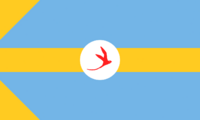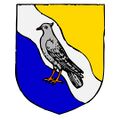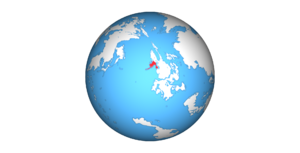Hubdova: Difference between revisions
No edit summary |
No edit summary |
||
| Line 86: | Line 86: | ||
===Expansion and the War of Retribution=== | ===Expansion and the War of Retribution=== | ||
A truce was signed in 1099, ending the short conflict between the two sides since they were not in a good place militarily. Both sides agreed on a border separating the nations and instituted a policy forbidding the construction of military facilities within 30 kilometres of it. What this treaty did not prevent is the massive inflation of both of their militaries to try to intimidate the other | A truce was signed in 1099, ending the short conflict between the two sides since they were not in a good place militarily. Both sides agreed on a border separating the nations and instituted a policy forbidding the construction of military facilities within 30 kilometres of it. What this treaty did not prevent is the massive inflation of both of their militaries to try to intimidate the other from attacking in the future. With this newfound power, and with both sides' population becoming too much of a burden for their land and their resources, they decided to expand outward for the next 264 years, filling in the uninhabited territory that makes up present day Hubdova. Both Gäslö and Arcadia moved north, creating a border that runs north to south, nearly splitting the Hubdovan Peninsula in half. Arcadia moved across the plains of the west and expanded to the southwestern slopes of the Nicoshire Mountains. Gäslö, on the other hand, expanded further west through the boreal forests of Rizidian and along the southwestern coast. During this time, Arcadia implemented a Duke, and declared themselves as the [[Duchy of Arcadia]]. The Duke they implemented was a man by the name of [[Aatami Virtanen]], a member of the prominent Virtanen family and was one of the founding members of the council that ruled Arcadia up to this point. Virtanen was a militaristic, but diplomatic man. He increased the physical size of Arcadia's army while increasing the speed of the technological advancement of not just the military, but other parts of Arcadian every day society. From iron tipped spears to steel alloy broadswords and arrows, the militaristic capabilities of Arcadia jumped dramatically during this time, going from 75 lightly armed and armoured men to nearly 1500 heavily armed and armoured men. The Kingdom of Gäslö saw this and made their own militaristic improvements. They kept on with iron spear weaponry, but they mass produced them and gave them to an army of 2200 men, far surpassing the Arcadian military in regards to servicemen. Due to this, however, | ||
Revision as of 14:18, 16 December 2022
The Republic of Hubdova Husmdovnä Tasavalta | |
|---|---|
| Motto: “Astumme universumiin nöyrästi ja toivoen.” "We step into the universe with humility and hope." | |
| Anthem: To Victory With Honour | |
Orthographic map of the location of Hubdova | |
| Location | Located on a northwestern peninsula of North Laurentia. |
| Capital and largest city | Arcadia |
| Official languages | |
| Recognised regional languages | Karaami |
| Ethnic groups (2025) | |
| Religion | No Official Religion |
| Demonym(s) | Hubdovan |
| Government | Indirect Democracy |
| Kristofer Heikkinen | |
| Hanna Järvi | |
| Bjorn Kinnunen | |
| Täävi Niemi | |
| Legislature | Parliamentary Assembly |
| Parliament | |
| Establishment | |
| 900 CE | |
| 1616 CE | |
| Area | |
• Total | 377,272.67 km2 (145,665.79 sq mi) |
| Population | |
• January 2026 estimate | 52,557,092 (19th) |
• 2025 census | 52,032,671 |
• Density | 57.3/km2 (148.4/sq mi) (16th) |
| GDP (PPP) | 2025 estimate |
• Total | 2.672 trillion Hunovas |
• Per capita | 68,875 Hunovas |
| GDP (nominal) | 2025 estimate |
• Total | 3.4 trillion Hunovas |
• Per capita | 69,312 Hunovas |
| Gini (2025) | 31 medium |
| HDI (2025) | very high |
| Currency | Hunova (⳩) (HUN) |
| Time zone | UTC: -10, -11 |
| Date format | DD-MM-YYYY |
| Driving side | right |
| Calling code | +29 |
| Internet TLD | .hd |
Hubdova (Hubdovan: Husmdovnä Tasavalta), officially the Republic of Hubdova, is a nation situated on the Hubdovan peninsula on the continent of North Laurentia. Hubdova is bordered to the north by Kurama Republic and has a sea boundary with Socialist Platypus in the western islands, around the island of Lesay. Hubdova covers a land area of 377,272.67 km2 (145,665.79 mi2) with a population of approximately 52,557,092 people (est. Jan. 2026). This population is spread across 9 national districts and 47 subdistricts. The capital and largest city is Arcadia with 9.06 million inhabitants and is the major economical and political centre. Other notable major urban areas include La Ardu, Ipoiphis, Vilburg, Nesmour, and Eqrihstead. Hubdova is considered an indirect democracy and has a Parliamentary Assembly with only one house. The national anthem is ''To Victory With Honour'' - written by Armas Maijala.
Etymology
The term "Hubdova" is the anglicised form of the native "Husmdovnä" from the Hubdovan native tongue. This name came out of a combination of two words, "husumme" and "dovnä". These two words came of the legend of the first words said during the settlement of Hubdova, that being "Tässä me husmme, tämä on dovnä" which roughly translates to "Here we live, this is home". This was changed into a simpler, English version that we know today as Hubdova. Other common ways of referring to Hubdova include "The Republic", and "'Dova" (informal). The demonym that is used to refer to items, events, places, or people originating in Hubdova is "Hubdovan".
History
Prehistoric Proto-Hubdovan History
Evidence from archaeological sites in and around Oxdurn Lake, the southern Hubdovan coast, and in the forests of Omattäs suggest that humans first settled on the Hubdovan Peninsula around 11,000 BCE, with the earliest found just north the present day city of Eqrihstead.
Agriculture first developed later around 500 BCE in the fertile fields around the Pilware River, downstream from the present-day city of Vilburg in the national districts of Telaxöron and Nicoshire. Evidence of the first crops grown in the areas is foggy at best, but historians have estimated that, most likely, the first crops were a sort of winter-wheat that could be grown during both the summer and winter growing seasons because of its environmental resilience. The development of agriculture in these areas led to the settling of increasingly larger settlements as time progressed. People could settle down and grow their food around the river, drinking the pristine waters from the glacial runoff from the Nicoshire Mountains upstream.
Not much more is known about this time, because approximately near year 30 BCE, a miniature ice age plagued these settlements, resulting in famine, disease, and mass death. The Pilware River froze over for 5 years straight, causing the residents of the agricultural settlements to die due to insufficient water resources for drinking and for irrigation for their crops. Everyone in the north mass migrated down south, following the animals as they did the same. They eventually resettled with their counterparts in Toclariä where the chill was less severe. The now-vacant Hubdovan Peninsula would not be inhabited for another 900 years and shaped the culture of Toclariäns in legends of ice that can still be seen to this day.
Early Hubdovan History
Approximately around 910 CE, a tribe of Toclariäns broke out of the civilisation and migrated north in search of new land to found a new civilisation in an event called The Exodus. This new group and the Toclariäns would not be united for over a thousand years. The group followed the coast to the ----------- where the party's leader would found four villages: Joensuu, Mustikkamaa, and Kallio all centred around the largest of the four: Arcadia. This is the point that modern historians deem the official beginning of the founding of Hubdova by modern Hubdovans. Arcadia would be the start of the largest and, eventually, the capital of Hubdova. Over time, the residents of these small villages would explore the forests around them, searching for natural resources or anything of use. They primarily stayed as fishermen and farmers at the delta of the Pilware River, customs and traditions they brought with them from The Exodus. The political situation with the smaller villages surrounding and, ultimately, being controlled, by the central, larger settlement of Arcadia stayed the same for approximately 182 years.
After that time, however, the western villages, most notably Joensuu, Mustikkamaa, and Kallio, started distancing themselves from Arcadia due to public discontent of the subjugation. The Arcadians weren't so fond of this, and tensions built up for the first time between the villages. This distancing kept going for nearly 350 years, with the western villages and cities blocking the enforcement of laws put down by Arcadia's leaders, and implementing their own, which the Arcadians tried to shut down. The two sides did not have much of a military, with Arcadia having only 75 unarmoured men with spears, and the Western Coalition having 45 unarmoured men with spears loyal to their cause. At one point, in 1098, the Arcadian "military" stationed half of its men at key points in the Western Coalition, most notably where the coalition's leadership and government was rumoured to be conducted at. This made the public and the coalition's government furious and proclaimed that this was illegal subjugation. They moved 40 of their 45 men, alongside angry mobs of civilians, to confront the Arcadian soldiers. A fight of words consumed the area and, somehow, one of the westernmen was stabbed by the spear of an Arcadian. This, in a domino effect, led to the western soldiers (and some of the armed civilians) began fighting the Arcadians, which were not prepared for such an event and were forced to retreat. As soon as the last Arcadian soldier crossed back into Arcadia, the Western Coalition government proclaimed sovereignty and barred travel from the east to the west, and vice versa. They combined all the western villages into one nation, calling themselves the Kingdom of Gäslö.
Expansion and the War of Retribution
A truce was signed in 1099, ending the short conflict between the two sides since they were not in a good place militarily. Both sides agreed on a border separating the nations and instituted a policy forbidding the construction of military facilities within 30 kilometres of it. What this treaty did not prevent is the massive inflation of both of their militaries to try to intimidate the other from attacking in the future. With this newfound power, and with both sides' population becoming too much of a burden for their land and their resources, they decided to expand outward for the next 264 years, filling in the uninhabited territory that makes up present day Hubdova. Both Gäslö and Arcadia moved north, creating a border that runs north to south, nearly splitting the Hubdovan Peninsula in half. Arcadia moved across the plains of the west and expanded to the southwestern slopes of the Nicoshire Mountains. Gäslö, on the other hand, expanded further west through the boreal forests of Rizidian and along the southwestern coast. During this time, Arcadia implemented a Duke, and declared themselves as the Duchy of Arcadia. The Duke they implemented was a man by the name of Aatami Virtanen, a member of the prominent Virtanen family and was one of the founding members of the council that ruled Arcadia up to this point. Virtanen was a militaristic, but diplomatic man. He increased the physical size of Arcadia's army while increasing the speed of the technological advancement of not just the military, but other parts of Arcadian every day society. From iron tipped spears to steel alloy broadswords and arrows, the militaristic capabilities of Arcadia jumped dramatically during this time, going from 75 lightly armed and armoured men to nearly 1500 heavily armed and armoured men. The Kingdom of Gäslö saw this and made their own militaristic improvements. They kept on with iron spear weaponry, but they mass produced them and gave them to an army of 2200 men, far surpassing the Arcadian military in regards to servicemen. Due to this, however,


